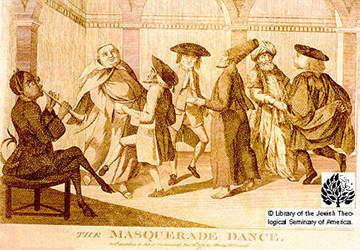



 The
foreign, specifically the oriental costume was the most popular subspecies of
fancy dress [1]. The frequency of foreign costume gave the
masquerades a multicultural feel, but the respectful representation of other
cultures was in no way the intent. Rather, foreign costume was an extension
of English imperialistic pride; in the second half of the eighteenth century
the popularity of Persian, Indian, and Chinese dress increased along with British
colonial and economic advances in those regions [2]. The geographic
proximity and intensified diplomatic relations with Turkey made clothing from
that region especially popular.
The
foreign, specifically the oriental costume was the most popular subspecies of
fancy dress [1]. The frequency of foreign costume gave the
masquerades a multicultural feel, but the respectful representation of other
cultures was in no way the intent. Rather, foreign costume was an extension
of English imperialistic pride; in the second half of the eighteenth century
the popularity of Persian, Indian, and Chinese dress increased along with British
colonial and economic advances in those regions [2]. The geographic
proximity and intensified diplomatic relations with Turkey made clothing from
that region especially popular.
Travel accounts and popular literature also helped increase interest in foreign dress and culture. However it lead to a superficial interest in foreign culture, which was at times indistinguishable with interest in foreign dress [3]. The wearing of foreign dress even emerged into everyday casual wear.
Endnotes
1. Castle, Terry. Masquerade and Civilization: the Carnivalesque
in Eighteenth-Century English
Culture and Fiction. Stanford, CA: Stanford University
Press, 1986, 60.
2. Ribiero, Aileen. The Dress Worn at Masquerades in England
1730 to 1790. New York, NY:
Garland Published, 1984, 223.
3. Castle, 60.